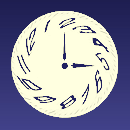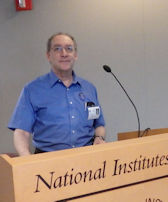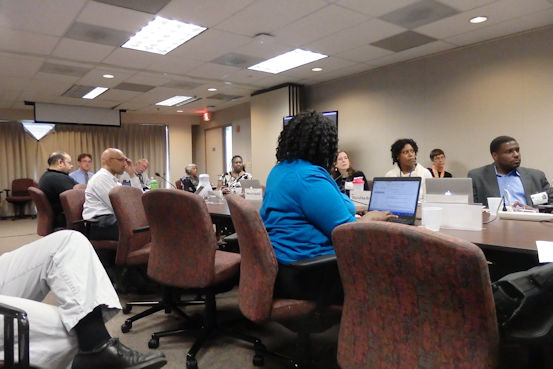

 [Title slide]
[Title slide]
Hi. I'm Peter Mansbach and I'm president of Circadian Sleep Disorders Network.
[slide - Registry and Survey]
We've started a patient registry and a detailed survey, partnering with AltaVoice, which supplied the software and guarantees HIPAA compliance. This went live in February. The combination of registry and survey provides de-identified information about Circadian Rhythm Sleep Disorder patients, that can be used by researchers to contact prospective study subjects with characteristics of interest.
[slide - Preliminary results]
The survey results by themselves are providing a lot of interesting information. As of May 28, 208 people had completed the survey. We hope to get 500. I'll summarize some preliminary results. We did not analyze the entries in detail, and have not yet looked at correlations - for example if forcing oneself to get up early for work increases the incidence of other health conditions.
[slide - Circadian Rhythm Disorders]
This slide shows the distribution among the different Circadian Rhythm Sleep Disorders in our survey respondents.
Of particular note, there are a lot more sighted Non-24 people in this small sample than most doctors would expect. We suspect that sighted Non-24 is more prevalent than is commonly believed.
[slide - Tiredness]
When sleeping on their body's preferred schedule: 58% still feel tired. 32% sleep 9½ hours a night or more.
I keep reading that if we slept on our body's preferred schedule we would sleep normally and wake well-rested. But these results contradict that - as does my own experience. There's more going on than just the timing of sleep.
Of those who have to force themselves up at a particular time for work, school, or family, over half get 6½ hours or less sleep on workdays. 61% are late for work or school at least once a week.
That's a public health issue.
[slide - Other Sleep Disorders]
37% of respondents with a circadian rhythm disorder also have been correctly diagnosed with another sleep disorder.
This suggests that many patients have multiple symptoms, which can complicate diagnosis and treatment.
[slide - Other Conditions]
A lot of our members have mentioned other medical conditions they suffer from, so we asked about some of those to see if any correlations emerged.
[slide - Other Conditions con'd]
47% also suffer from depression. For 2/3 of those, the depression started AFTER the circadian rhythm disorder.
Doctors frequently say that depression is the cause of sleep problems. This suggests it is often the other way around.
26% of respondents also get migraines.
49% of respondents felt they were unusually sensitive to bright light.
Does perceived sensitivity to light correlate with response to various treatments? For example, do the people more sensitive to light do better or worse with light therapy? Do they require light restriction in the evening to achieve their targets?
[slide - Treatments]
Of the 80 people who tried light therapy, only 18% achieved their desired sleep times.
This includes people using other treatments in addition to light. Clearly light therapy isn't the ultimate solution for most people, despite what many doctors seem to think.
Of the 75 people who tried light restriction, 62% are still using it.
Of the 140 people who tried melatonin. Only 13% achieved their desired sleep times. Most used it within an hour of bedtime.
Melatonin should be taken much earlier to be most effective in shifting circadian rhythm.
Phase-delay chronotherapy for DSPD involves progressively delaying sleep a few hours a day, around the clock, until the desired sleep time is achieved, and then stabilizing. Of the 68 people who tried it, only 1 said it helped indefinitely. 93% said it helped for a month or less or not at all. 29% said their DSPD became Non-24 after using it.
This is not a long-term solution for DSPD, and appears to involve unacceptable risk of becoming Non-24. Yet doctors continue to recommend it.
[slide - NIH web site]
You know I have to bring this up again:
For FIVE YEARS we've been asking NIH to add Circadian Rhythm Sleep Disorders to their sleep web pages, to no avail. People say "it's not a real disorder - it's not even mentioned on the NIH web pages."
[slide - NIH Web Site Links]
This is not just NHLBI, but other institutes as well.
[slide - Registry and Survey Links]
In conclusion, we need more research on people who have Circadian Rhythm Sleep Disorders, including best treatments and how to time them. We're hoping our survey will generate more interest in research on these people.
I'll leave this slide up.

NIH SDRAB Meeting In Progress